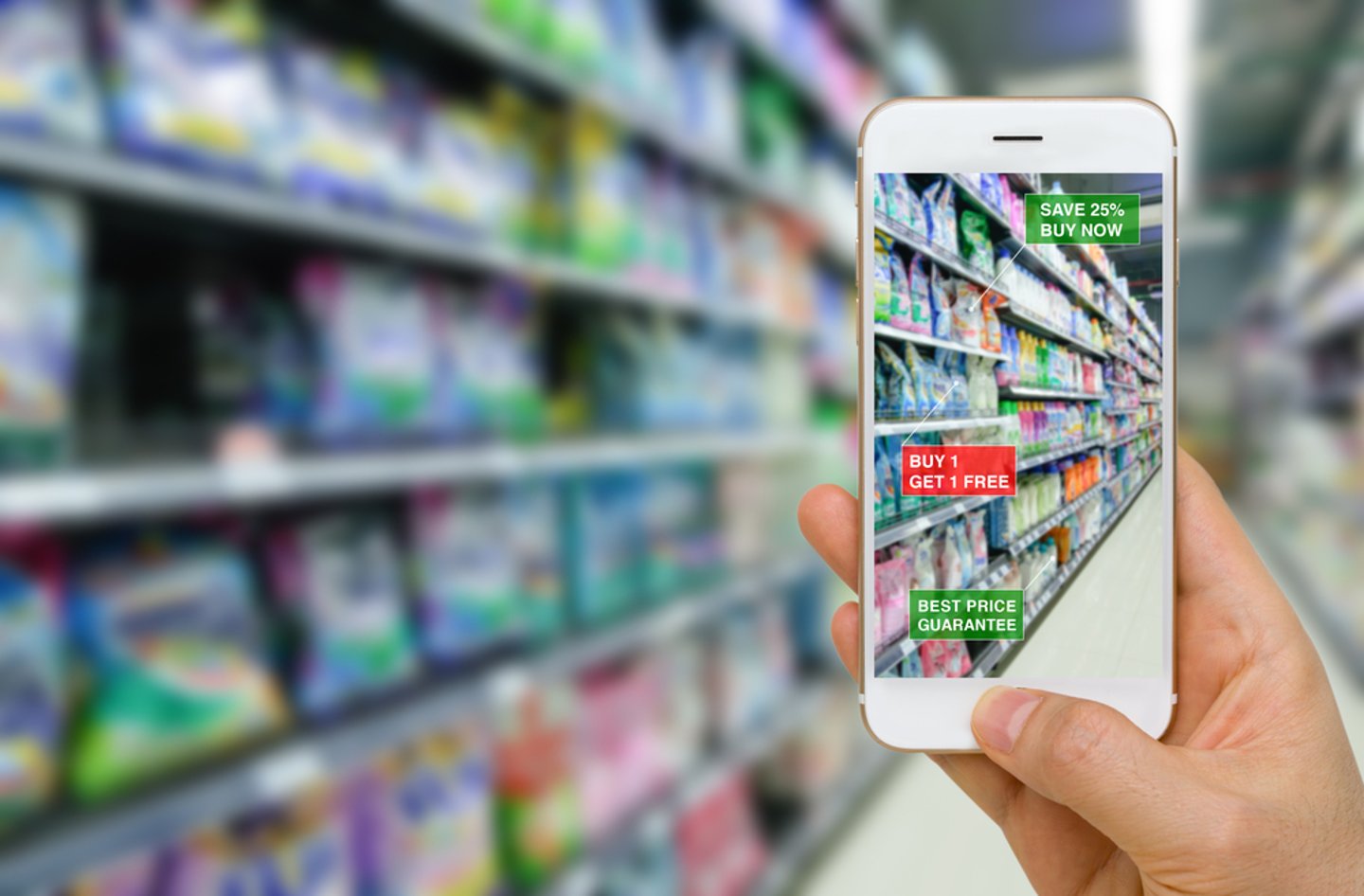Why Grocers Are Buying Into AR
After months of stubborn inflation, customer sentiment in the United States is the lowest it’s been in 50 years. Faced by rising costs and an ongoing labor shortage, supermarkets and other retailers are eagerly exploring creative ways to boost sales and deliver more satisfying shopping experiences.
As a result, many are transforming their in-store purchase journeys with augmented reality (AR).
[Read more: "The Top Technology Trends Every Grocer Should Adopt in 2023"]
Physical Grocery Retail Is Overdue for an Upgrade
Brick-and-mortar stores remain the primary point of purchase for consumers, according to a report last month from the National Retail Federation. The pandemic supercharged the growth of e-commerce, however, which poses a serious long-term threat to the dominance of physical stores. Meeting shoppers in the moment in-store is one of the biggest challenges that grocers face.
Online grocery retailers offer a seamless experience, and physical stores have struggled to provide the same level of personalization and convenience. Aside from loyalty program-generated mailers and coupons, every visitor to a physical store receives the same offers and ads, regardless of intent, demographic or purchase history.
In-store promotions compete with actual products for eye-level real estate, making the art of merchandising a painful exercise in compromise. Shoppers become frustrated, relying on sparse signage to help them navigate the aisles in search of the items they need.
This inefficiency can be costly. Studies show that when customers can’t find an item in-store, close to a quarter of them will leave and look for the product elsewhere. Those dollars and customers are lost – but they don’t need to be. Now change is within grocers’ reach.
Personalization Enhances the In-Store Experience
AR technology can help supermarkets deliver a better customer experience using the smartphones that shoppers are already carrying. By adding a digital AR layer to the physical store, grocers can leverage the advantages that have enabled e-commerce to thrive: discovery, search and personalization.
Wayfinding AR apps like U.K. retailer Marks & Spencer’s List & Go provide customers with an on-screen path to the products on their shopping list. Using their phones, shoppers follow a compass and digital markers to more quickly and easily find what they need, and discover other items they might want.
Placement of digital information in the store also enables convenient filtering capabilities. For instance, Walmart is exploring AR filtering features for its store app, which would allow customers to point a device at store shelves and sort items based on preferences like ingredients and markdowns.
Even beyond its usefulness for faster and easier shopping, AR offers a way to bring fun product interaction to in-store experiences. Take U.K. grocer Tesco’s AR Discover App, which helped bring Disney “Frozen”-branded products to life by letting children take “selfies” with their favorite characters.
Gen Z Demands Convergent Commerce
These technological advances are poised to meet a moment of opportunity and change across the entire retail landscape. Consumers are increasingly seeking speed and convenience in their shopping experiences, and have little tolerance for anything less. That’s a big reason that convergent commerce, the blending of digital and physical in the context of retail spaces, has been welcomed by shoppers and retailers in many environments, as it can help reduce frustrating customer friction and churn.
Gen Z shoppers are the most eager to embrace these experiences. Younger shoppers are twice as likely to use emerging media than their older peers and are currently the heaviest adopters of many forms of immersive shopping.
AR provides a powerful tool for retailers across verticals to help meet these heightened customer expectations, and physical grocery retailers stand to gain the most.
It has the potential to transform and elevate the in-store shopping experience beyond simple perks, particularly when coupled with helpful in-app features like scan and go. If grocers leverage first-party customer data to precisely place digital information via AR – complemented by AI-enabled shopper guidance – physical stores can reach customers in more personalized and meaningful ways than ever before thought possible.
A New Path to Savings for Customers and Retailers
AR technology isn’t new – more than 101 million people in the United States alone used it last year – but its utility in food retail has been seriously overlooked.
Amid ongoing labor shortages and razor-thin margins, it’s expensive and unrealistic to give personal attention to each shopper using traditional approaches. However, well-timed, relevant AR user experiences have the potential to boost customer engagement and make stores more competitive.
In a post-pandemic reality marked by economic uncertainty, heightened consumer expectations, and fierce competition, AR might just be grocery’s holy grail.






